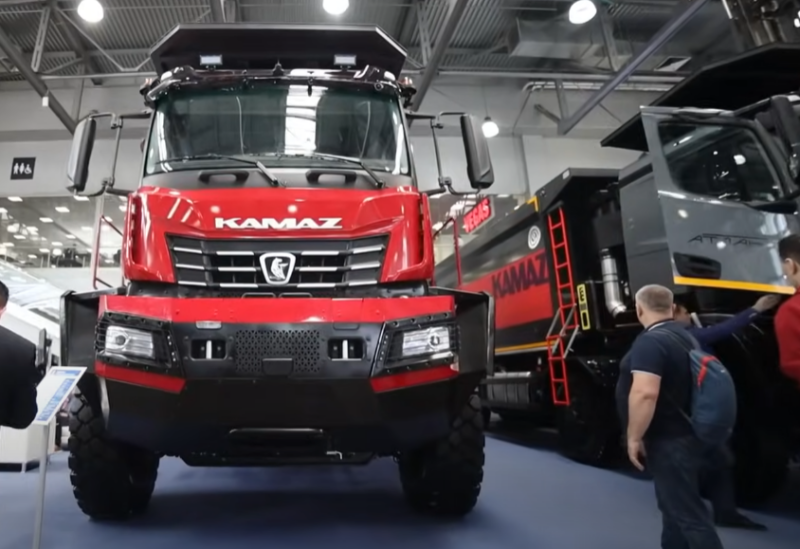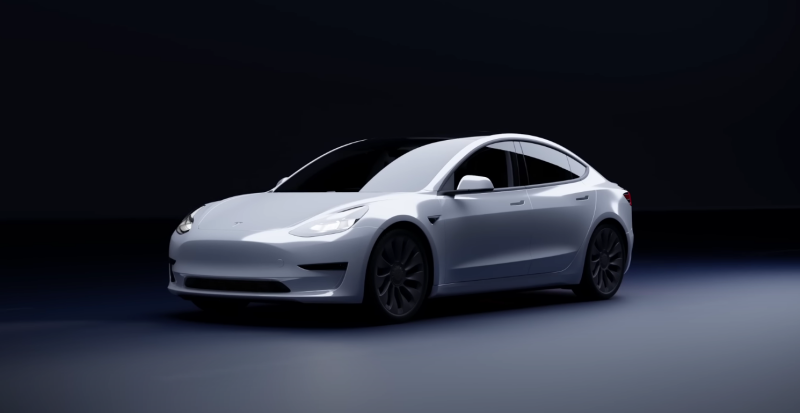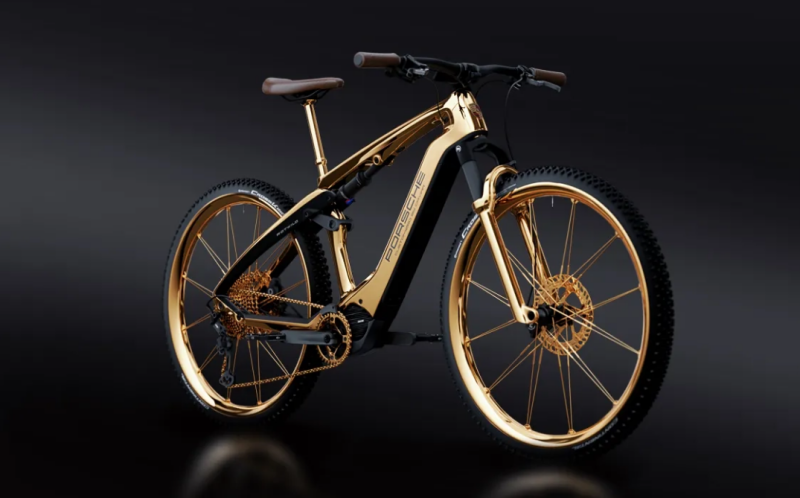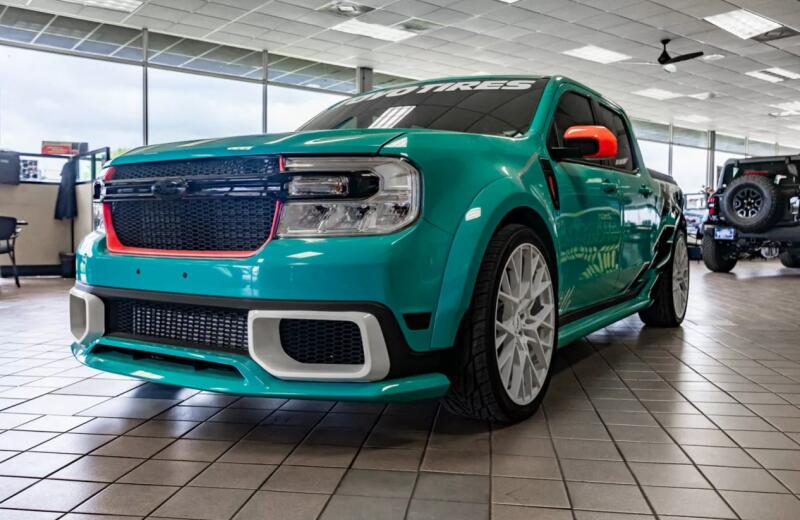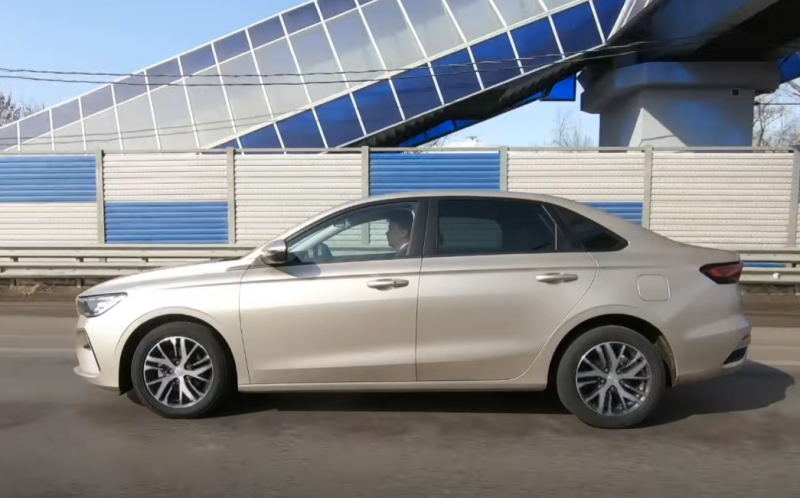Remember this?.. Not surprising: the company is on the list of forgotten names. But it was she who was at the forefront of colorful, vibrant post-war automobile design. She released powerful, long, majestic cars onto the roads. Gluttonous, but with a soft ride, and irresistibly beautiful. How did it happen?
Remember the manufacturer
The Hudson Motor Car Company established itself in 1909. There weren’t enough stars in the sky, competing with Nash, competed with Studebaker, fought for a market niche with Willys-Overland, Graham-Page.
 Hudson Commodore 1948 is one of the founders of the American “yacht club”. Photo: YouTube.com
Hudson Commodore 1948 is one of the founders of the American “yacht club”. Photo: YouTube.comIt did not produce huge volumes: in the most prosperous period (late 20s), the circulation was 270 thousand cars. In normal times - 130 thousand per year. Once, in 1929, the successful Hudson model brought the machine manufacturer to third position in sales after the giants Ford and Chrysler.
Compatriots loved the Hudson product for its high quality, traditionally spacious interior and spacious trunk. The engineering team was strong: they were one of the first to introduce independent front suspension, and developed their own Drive-Master automatic transmission in the early 40s. They experimented with aluminum instead of steel as body metal.
Circumstances of birth of the Hudson Commodore 1948 model
During World War II, the company made good money on military orders. Already in 1943, management began to think about offering such an original product to a user hungry for new products. Slowly they began to work on a modification of the pre-war Hudson model.
 Gorgeous front end of a 1948 Hudson Commodore. Photo: YouTube.com
Gorgeous front end of a 1948 Hudson Commodore. Photo: YouTube.comThe project was led by the company's chief designer, Frank Spring. A tireless enthusiast and innovator, he quickly grasped the best ideas from the global automotive industry. The assistants were outstanding stylists: the owner of many patents Robert Andrews and Bill Kirby. The boss of the company was Abraham Barit.
F. Spriggs chose the Tatra 87 model as the prototype of the future car. His new car will have an aerodynamic monocoque, the developer decided. He became convinced of the advantages of such designs on the aircraft fuselages that the plant produced in 1941-1945.
Responsible for the appearance, Andrews and Kirby came up with a revolutionary, unlike anything else, appearance of the Hudson Commodore. This exterior would later go down in the annals of the industry as bold and cutting-edge. But at first there was rejection. General Director E. Barit doubted that the conservative American public was ready for extravagant decisions in appearance. The manager was cautious and slowed down the creative impulses of the team.
White lie
Then Andrews uses a trick. He creates a sketch of the model, draws on the Buick emblem and, as if accidentally dropped, places the sheet of paper on Spriggs’ stool. Frank wonders what it is? The deceiver makes “honest” eyes: a friend, they say, gave it from the GM design bureau. And I just finished drawing some of my own.
 "Hudson Commodore": at the stern there is the same "fence" of fangs as at the front. Photo: YouTube.com
"Hudson Commodore": at the stern there is the same "fence" of fangs as at the front. Photo: YouTube.comImpressed by what he saw, Springs runs with a sketch of the future model to Abraham Barit. The boss takes the bait: well, since GM creates such extraordinary bodies, we won’t be left behind. The sketch was approved at an emergency board of directors... Moral: it’s a shame to deceive the boss, but it’s necessary. Sometimes.
Model overview: design features
So, it was decided - a monocoque body. Not new in mechanical engineering, but the Commodore had the honor of being the first production car of this design.
The Hudsonians called the scheme Monobilt. It looked like this: they took 4 longitudinal and 8 transverse beams and welded them to the bottom of the spatial frame of the car. Wide spars added rigidity and, therefore, safety to the structure. However, the weight was 270 kg higher than the calculated figures, which, however, was still 150 kg lighter than the traditional frame.
 The general director of the Hudson company feared that the public would not accept the revolutionary appearance of the car. Photo: YouTube.com
The general director of the Hudson company feared that the public would not accept the revolutionary appearance of the car. Photo: YouTube.comThe longitudinal spars were combined with each other in a vertical plane. Because of this, the threshold turned out to be high, although the car looked (and was) radically squat. The floor was suspended from below, so the owner had to cross a threshold to get inside the car. This type of body was called “Step-Down” - “Step Down”.
The rear frame spars passed behind the wheels and covered them from the outside. The lowering reinforced chassis, in addition to strength and safety, gave another advantage - a low center of gravity. In combination with a wide wheel track, this gave the model excellent handling and cornering stability.
 The Commodore's upholstery tag promises "the latest sensation in comfortable seating." Photo: YouTube.com
The Commodore's upholstery tag promises "the latest sensation in comfortable seating." Photo: YouTube.comTo the listed qualities was added an incomparable smooth ride. This is thanks to the independent front suspension on telescopic shock absorbers, outlandish for those years. At the rear there was a continuous axle on semi-elliptic springs and an anti-roll bar.
Drivers and passengers truly experienced the incredible sensation of being on a sea yacht. That's why newspaper writers called the 1948 Hudson Commodore a "Land Yacht Commander" and "automotive art."
Exterior
The model turned out remarkably beautiful. Integrated pontoon wings added elegance to the streamlined body. This is an option where the front and rear wings merge to form a single top line. At the same time, the rear wheels are covered below the discs, which enhances the “grounded” effect of the car.
 Hudson Commodore 1948 pontoon fenders. Photo: YouTube.com
Hudson Commodore 1948 pontoon fenders. Photo: YouTube.comThe front, like the rear, displays a whole “fence” of fangs on the bumper. The radiator grille with three large crossbars is expressive in its simplicity. Everything is voluminous, monumental, shining with chrome.
Marine motifs are present everywhere. For example, in miniature fins. The Hudsonians placed decorative rather than functional elements, breaking the rules, not at the stern. Fins flaunt on the front wings.
 The 1948 Hudson Commodore nameplate illuminates from the inside when the headlights are turned on. Photo: YouTube.com
The 1948 Hudson Commodore nameplate illuminates from the inside when the headlights are turned on. Photo: YouTube.comThe ships are engraved on the horn and visible on the nameplate adorning the hood. The icon (a funny little thing) lights up when the headlights are turned on. An interesting detail regarding optics: the rear lights were standard, and the turn signals were optional.
Machine dimensions:
✅ Length - 5270 mm
✅ Width - 1957 mm
✅ Height - 1534 mm
✅ Wheels – 15 inches
Another original thing is the “scoop” on the hood. The element is located in front of the curved and bisected windshield. This solution doubled the cost of the windshield compared to smooth, solid glass. But how solid! The electric “bucket” opens from the passenger compartment and draws in additional air to cool the engine.
 Additional air intake in front of the windshield of the Hudson Commodore 1948. Photo: YouTube.com
Additional air intake in front of the windshield of the Hudson Commodore 1948. Photo: YouTube.comWhat do you think of the protective visor above the windshield? A touching rudimentary detail, which manufacturers have now abandoned in favor of aerodynamics.
Interior
The second row sofa for 4 passengers is located not above the drive axle, but in front of it, within the wheelbase (3140 mm). Hence the low roof and wide wheel track, all without sacrificing interior space. In the salon - ride your horse!
 Inside the Hudson Commodore 1948. Photo: YouTube.com
Inside the Hudson Commodore 1948. Photo: YouTube.comIn front, according to American fashion, a solid sofa was also installed. The door panels and seats were upholstered in thick, soft cloth. At first glance, wood was used for decoration; in fact, it was painted metal. Parpriz carries large round instruments, a standard radio, and a clock. The stylists built two glove boxes: under the driver’s left hand and opposite the front passenger. And both are locked with a tiny shiny key.
 Clock and glove box for the front passenger in the interior of a Hudson Commodore 1948. Photo: YouTube.com
Clock and glove box for the front passenger in the interior of a Hudson Commodore 1948. Photo: YouTube.comThe interior is so ergonomic and comfortable that it deserves comparison to a well-tailored suit. This is when everything is in place, adjusted to the figure: perfect wrists, shoulders, armhole. Indeed, nothing in the car is depressing or annoying. There is plenty of light and air, and the noise is at an acceptable level.
Engine, chassis
Under the hood, the developers placed a longitudinally in-line V8. The hood turned out to be very long. It's difficult to drive when you're not used to it. Moreover, the window sill line is high and the rear pillars are wide. But that’s what they are – land cruisers.
Technical data for the L-head brand motor:
✅ Volume - 4170 cm3
✅ Power - 128 liters. With. at 4,2 thousand rpm
✅ Torque – 269 N*m at 1,6 thousand rpm
Our own production gearbox is a 3-band semi-automatic Drive-Master. The Commodore's all-round hydraulic drum brakes. Performance indicators are not amazing: the speed limit is 145 km/h, acceleration from zero to 96 km/h takes 18 seconds. But no one declared the car as a racing car. Although at NASCAR beach races our hero did not trail behind the Fords and other snobs.
 Engine compartment of a 1948 Hudson Commodore with a unique opening mechanism. Photo: YouTube.com
Engine compartment of a 1948 Hudson Commodore with a unique opening mechanism. Photo: YouTube.comThe four-door fastback is an amazing achievement of its time. For the 1948 model year it was the lowest, sleekest, most aerodynamic car available. The drag coefficient was not measured in the pipe: the plant did not have the necessary equipment. But there is evidence from experts that the figure is lower than that of the Nash Ambassador, which was considered almost the standard of aerodynamics.
Isn't the 1948 Hudson Commodore a delight? This is exactly how the public accepted her. The Hudson company loudly announced itself. But she didn’t continue the lineup for long. It turned out that the car became a hostage to its peculiarity - the monocoque body. The design did not allow the exterior to be updated annually. But the people demanded it. Therefore, already in the 50th, our poor manufacturer fell behind the Big Three. In 1952, the conveyor was closed. A couple of years later, the company merged with Nash-Kelvinator Corporation and became part of AMC. The brand existed until 1957.

